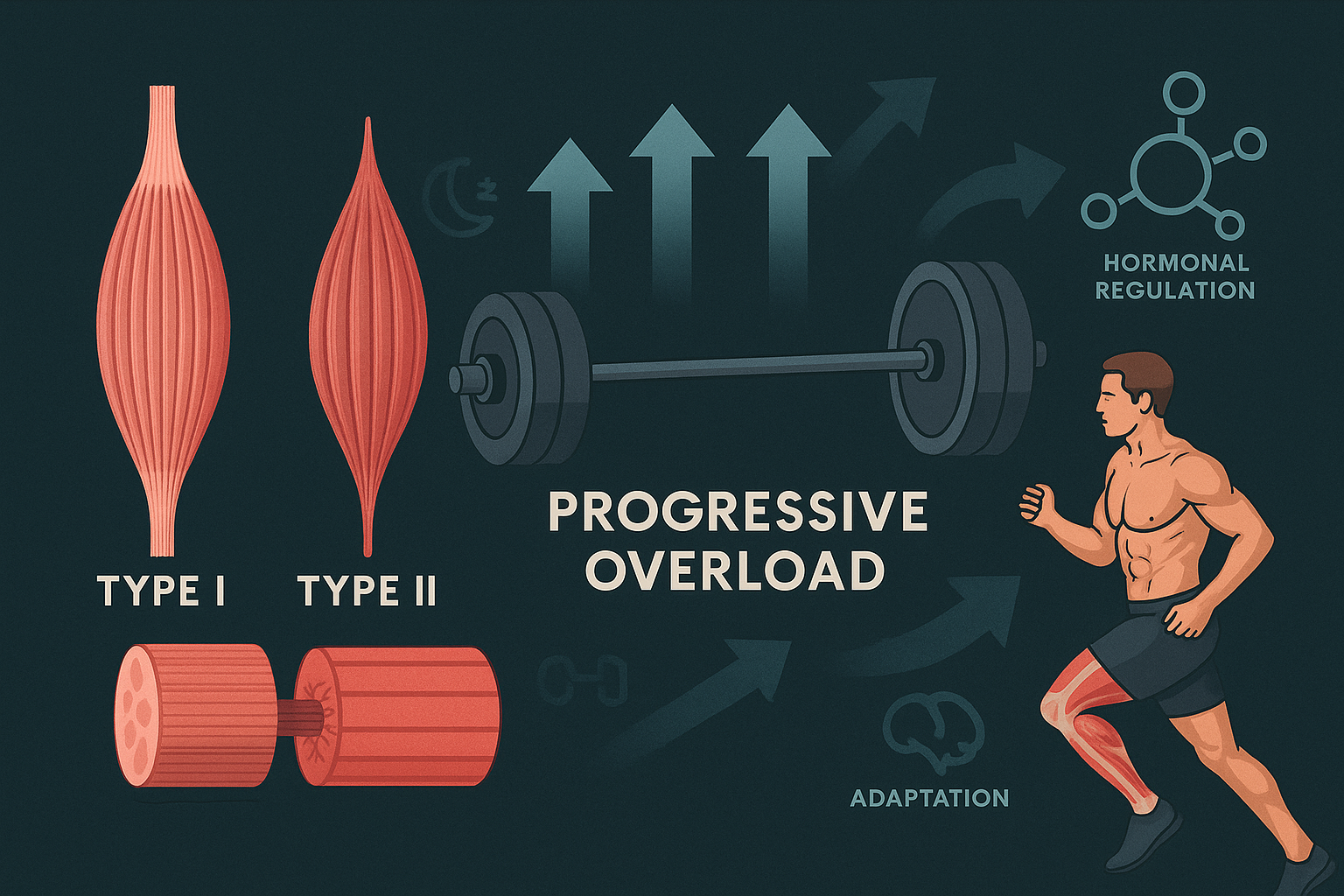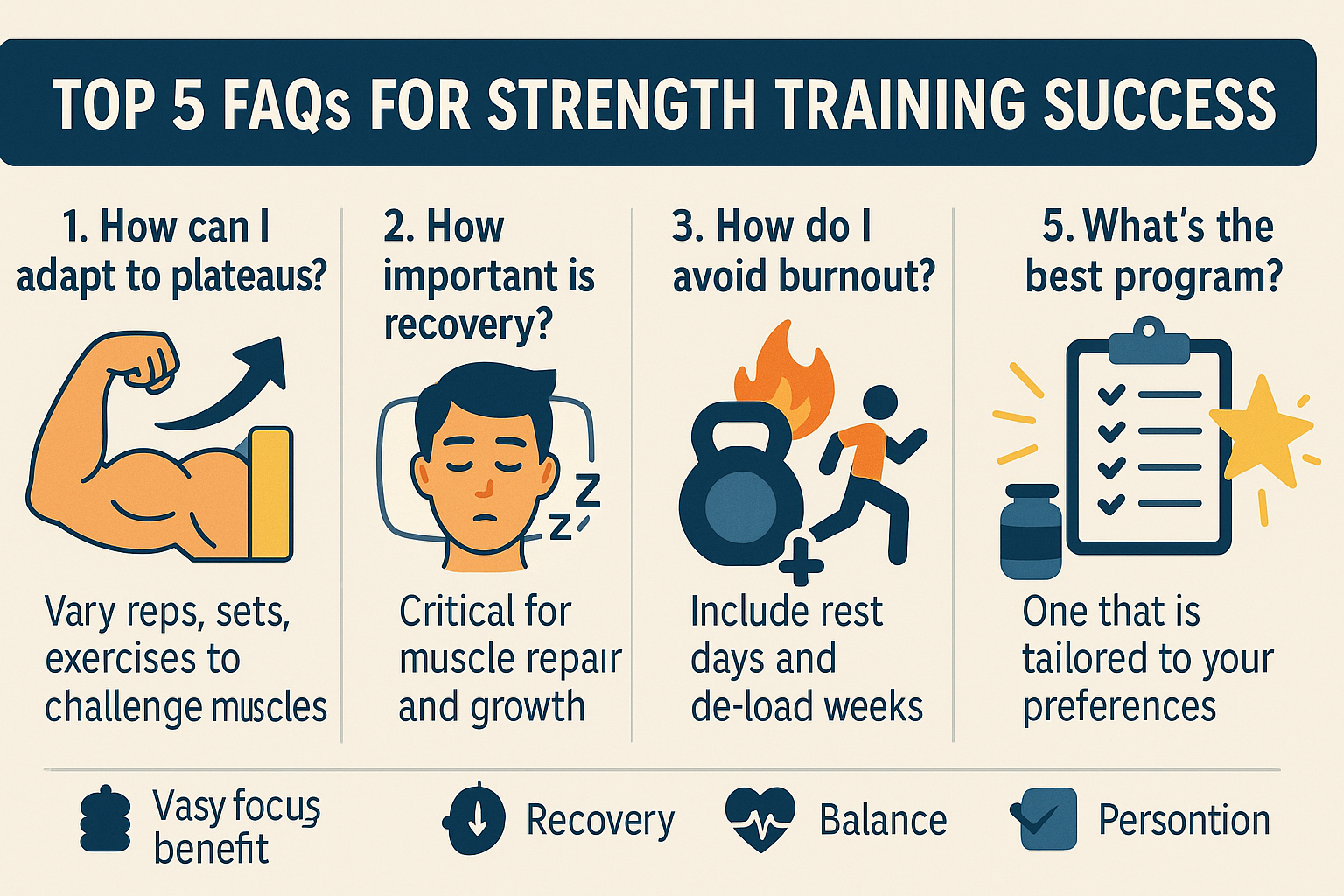Introduction: Unlocking Safe and Sustainable Strength Gains
In today’s high-performance fitness culture, mastering strength development goes far beyond lifting heavy weights. It requires intelligent planning, science-based techniques, and most importantly, a structured and safe approach. One of the most effective ways to achieve long-term muscular development while minimizing the risk of injury is to follow a well-structured weightlifting training program. Whether you are new to resistance work or a seasoned lifter looking to break through plateaus, a thoughtfully designed training regimen can dramatically improve your outcomes and sustainability.
The right program is not simply a matter of throwing together exercises and reps. It’s an orchestration of frequency, intensity, volume, and rest—designed to match individual physiology, goals, and experience levels. Unlike random workouts, a systematic strength plan uses progressive overload, movement variation, and adequate recovery to ensure consistent growth. More importantly, a safe and proven approach to lifting allows athletes to train hard without sacrificing joint health, hormonal balance, or energy levels.
This article is your comprehensive roadmap to implementing an effective and safe strength routine. It will dissect the physiology of muscular development, outline the most vital components of a successful resistance training workout program, and guide you step-by-step through crafting or choosing a strength lifting program that maximizes gains while preventing setbacks. If your goal is to thrive inside the gym and perform better outside of it, this guide will illuminate the principles and practices that separate short-lived intensity from lifelong strength mastery.
You may also like: The Ultimate 30-Day Workout Plan for Men Working Out in the Gym: Proven Full Body Strength Exercises to Maximize Results
Understanding the Science Behind a Weightlifting Training Program
To fully grasp the effectiveness of a weightlifting training program, it’s essential to understand how the body responds to mechanical tension and resistance. Strength building begins with a concept known as progressive overload—the gradual increase of stress placed upon the musculoskeletal system. When executed properly, this triggers a cascade of physiological adaptations, including increased motor unit recruitment, muscle fiber hypertrophy, tendon stiffening, and hormonal regulation.
Muscle growth primarily involves two types of muscle fibers: Type I (slow-twitch) and Type II (fast-twitch). Type II fibers are particularly responsive to heavy loads and explosive lifting, which are commonly emphasized in structured strength programs. However, both fiber types benefit from periodized exposure to different rep ranges and time under tension. Additionally, neuromuscular adaptation is equally important. The nervous system becomes more efficient at firing the correct muscles in sequence, increasing coordination and strength output over time.
Recovery, often underappreciated, is a key driver of success. Muscle fibers repair and grow during rest—not during the workout itself. A well-constructed strength training program ensures adequate spacing between intense sessions, integrates deload phases, and recommends high-quality sleep and nutrition strategies. In essence, strength is not just built by what you lift, but by how you recover and adapt afterward.
Scientific literature supports the notion that a periodized strength routine is far more effective than random training. Periodization refers to the strategic cycling of intensity and volume over time to stimulate continual progress. By rotating through phases such as hypertrophy, strength, power, and deloading, the body is kept in a constant state of positive stress and adaptation, while avoiding stagnation and overtraining.

Designing a Weightlifting Training Program for Longevity and Results
Crafting a safe and effective weightlifting training program begins with clear goal setting. Are you training for raw strength, muscular hypertrophy, athletic performance, or general health? While these goals often overlap, each demands slightly different training variables. For instance, a strength plan focused on maximal force output will prioritize low-rep, high-load work with longer rest intervals. In contrast, a hypertrophy-oriented program leans toward moderate weights, higher volume, and shorter rest to stimulate muscle swelling and metabolic stress.
The cornerstone of any sustainable strength building program is exercise selection. Compound lifts—such as squats, deadlifts, bench presses, and overhead presses—should form the foundation due to their high transferability and recruitment of multiple muscle groups. These exercises are efficient, promote hormonal responses, and enhance real-world functionality. Complementary accessory movements like lunges, rows, and face pulls are then layered in to address individual weaknesses, improve balance, and prevent overuse injuries.
Progressive overload must be applied methodically. Beginners might increase weights weekly, while intermediate and advanced lifters require more nuanced progression models such as double progression (increasing reps before load), wave loading, or autoregulation. Moreover, the training split (full-body, upper/lower, push-pull-legs) must match the individual’s lifestyle, recovery capacity, and preferences. A strength routine that fits within one’s schedule and feels sustainable is more likely to succeed long-term than a demanding blueprint that burns out motivation.
Programming also involves managing total training volume—the product of sets, reps, and load. Too little volume results in stagnation, while too much leads to fatigue and injury. A balanced resistance training workout program will scale volume gradually, integrate lighter sessions, and include rest days to avoid cumulative overload. Incorporating mobility drills and warm-ups before training also preserves joint health and primes the body for optimal performance.

Key Components of a Proven Weightlifting Training Program
A high-quality weightlifting training program is more than a list of exercises. It is an orchestrated sequence of principles that work together to build strength in a safe, consistent, and efficient manner. The first critical component is structured progression. Without a measurable system of advancement, training quickly plateaus. Structured progression means knowing when to add weight, when to increase reps, and when to back off and recover.
The second pillar is movement variety. While consistency with core lifts is important, variation in accessory work prevents overuse, encourages muscle balance, and reduces the risk of repetitive stress injuries. Changing grip position, stance width, range of motion, or even equipment (barbells, dumbbells, cables) introduces fresh stimuli without abandoning the training plan.
Third, load management is essential. This includes not only how much weight is used but how often and how intensely you train. Intelligent load cycling, such as alternating heavy and light weeks, deloading after every four to six weeks of intense work, and adjusting based on energy levels, enhances long-term progress. Advanced techniques such as RPE (Rate of Perceived Exertion) and velocity-based training can refine load prescriptions to individual readiness levels.
Fourth, specificity should not be overlooked. If you want to increase your deadlift, you must deadlift. If your goal is muscle hypertrophy, higher-rep accessory work with sufficient volume is non-negotiable. A best strength program is always aligned with the principle of training specificity, ensuring that every exercise serves a direct purpose.
Lastly, recovery practices are part of the program itself. Active recovery sessions, mobility routines, sleep hygiene, and nutrition protocols are baked into elite strength programs. These components may not occur inside the gym, but they determine how well the body performs during each session. The effectiveness of any weightlifting program ultimately hinges on the quality of recovery it allows.

Structuring Weekly and Monthly Training Phases
Every strength training program should operate within a larger macrocycle (3-12 months), divided into mesocycles (4-8 weeks), and microcycles (1 week). This hierarchical structure allows for adaptation over time without exhausting the nervous system or reaching a plateau prematurely. Beginners may not need elaborate periodization, but intermediate to advanced lifters benefit significantly from structured phases.
A standard week in a strength plan might consist of three to five training sessions. A full-body program could span three days, with each session covering one push, one pull, and one lower-body movement. A four-day upper/lower split may alternate between compound strength lifts and hypertrophy-focused accessory work. Push-pull-legs programs offer even more frequency and can be customized based on recovery speed.
Each microcycle should feature varying levels of intensity. For example, Monday might be a heavy squat and bench day, Wednesday a moderate deadlift and row day, and Friday a lighter full-body session emphasizing accessory lifts. This undulating approach helps manage fatigue and promotes recovery without sacrificing training density.
At the monthly level, a strength program might rotate through different themes: accumulation (volume), intensification (load), realization (testing performance), and restoration (recovery focus). For instance, a four-month cycle might start with high-volume moderate-weight lifting to build a base, move into heavier loads at lower volume, and culminate in a testing phase followed by a deload week. This flow ensures progressive gains without overtraining.
Tracking performance across these cycles is crucial. Journaling reps, weights, energy levels, and perceived effort allows lifters to identify patterns, troubleshoot stagnation, and celebrate achievements. Feedback loops transform a routine into a personalized and evolving strength building program.

Integrating a Weightlifting Training Program with Other Fitness Goals
Many people interested in strength also have other fitness aspirations: fat loss, cardiovascular endurance, athletic performance, or body recomposition. A versatile weightlifting training program should accommodate these goals without diminishing its core purpose. For example, those prioritizing fat loss may pair strength sessions with metabolic finishers or low-intensity cardio. Strategic meal timing and caloric management can ensure fat is lost while preserving lean mass.
Endurance athletes looking to gain strength can train two to three times weekly using compound lifts and low-volume sessions. This minimalist approach minimizes interference with aerobic training while providing structural resilience and power output. Similarly, recreational athletes can adapt strength lifting program templates to include agility drills, jump training, or mobility circuits that complement sport-specific demands.
Body recomposition requires delicate nutritional balance and programming that includes both hypertrophy-focused and heavy compound movements. A resistance training workout program built for recomposition typically features moderate loads, higher volume, and carefully calculated caloric intake. Recovery again becomes essential, as training in a caloric deficit challenges the body’s repair capacity.
Ultimately, strength need not be an isolated goal. A flexible yet disciplined strength training program can enhance every other aspect of fitness, from bone density and hormonal balance to coordination and injury resilience. The key lies in aligning programming variables with the broader context of your life and training objectives.

Avoiding Common Mistakes in Strength Training Programs
Even the most enthusiastic lifters can sabotage their progress through avoidable errors. The first and most common mistake is inconsistency. Sporadic training fails to produce the neuromuscular adaptations necessary for long-term gains. Establishing a consistent schedule, even if it means fewer sessions per week, is more effective than inconsistent intensity.
A second pitfall is overreliance on maximal lifts. While testing one-rep maxes can be motivating, doing so too often taxes the nervous system and increases injury risk. A smart strength routine emphasizes submaximal volume and technical proficiency over constant max effort attempts.
Another frequent error is neglecting warm-ups and mobility work. Skipping dynamic preparation increases the risk of strains and impairs performance. Dedicating 10-15 minutes to warm-ups, activation drills, and joint mobility can significantly improve strength output and reduce injury.
Program hopping—constantly switching between routines before they have time to produce results—is another growth killer. A weightlifting program should be given time (at least 8-12 weeks) before assessing its effectiveness. Adjustments are inevitable, but abandoning a plan too early prevents proper adaptation.
Finally, overlooking recovery is a silent threat. Chronic sleep deprivation, poor nutrition, and insufficient rest days will undermine even the best strength program. Recovery is not a luxury—it’s a physiological necessity for sustained progress. Those who master recovery habits build not only stronger bodies but more resilient mindsets.

Choosing or Creating the Best Strength Program for Your Needs
With countless templates available online, choosing the best strength program can be overwhelming. The right choice depends on your training history, lifestyle, recovery capacity, and specific goals. Beginners may benefit from linear progression programs like Starting Strength or StrongLifts, which emphasize basic barbell lifts and frequent practice. These programs teach movement fundamentals while rapidly increasing strength through neural adaptations.
Intermediate lifters might gravitate toward undulating or conjugate models, which vary volume and intensity across days to prevent stagnation. Programs such as 5/3/1 or PHUL (Power Hypertrophy Upper Lower) strike a balance between strength and muscle building. Advanced lifters often need highly individualized programming, informed by performance data, body feedback, and competition schedules.
Custom programming can be developed using basic strength training principles. Choose core lifts based on goals (e.g., squat for lower-body power, bench press for upper-body size), determine optimal training frequency, establish weekly volume targets, and cycle loads systematically. Layer in accessory movements that address weaknesses and enhance symmetry.
When choosing a coach or online plan, prioritize those with clear methodologies, evidence-based principles, and client success stories. Avoid programs that promise fast results through unsustainable methods. A true strength plan focuses on longevity, safety, and repeatable progress—not sensational claims.
Experimentation is also valuable. If a program aligns with your goals and lifestyle, try it for 8-12 weeks and assess your results. The best weightlifting program is one you can follow consistently, adapt to your feedback, and grow with over time.
Frequently Asked Questions About Starting and Succeeding with a Weightlifting Training Program
1. How can I make my weightlifting training program more adaptable to travel or a busy schedule?
One of the most practical strategies for keeping up with a weightlifting training program during travel or time constraints is to develop a minimalist version of your plan using bodyweight and resistance bands. Focusing on movement patterns rather than specific equipment ensures you can train anywhere. Prioritize exercises like push-ups, banded rows, goblet squats, and single-leg glute bridges to retain strength and mobility. Additionally, rotating your training into short, full-body circuits can help preserve training volume without exceeding 30 minutes per session. For consistency, integrating your sessions into morning routines or using a mobile app to track progress can keep you accountable and on schedule.
2. What overlooked variables affect long-term success in a strength training program?
Many lifters focus primarily on volume, intensity, and frequency, but miss critical support variables like stress management, sleep quality, and micronutrient intake. High cortisol levels from work or personal life can blunt adaptation in even the best strength program. Sleep, particularly REM cycles, plays a vital role in muscle repair and hormone regulation. Inadequate magnesium, zinc, and vitamin D levels also negatively impact recovery and performance. Periodic blood work, mindfulness practices, and sleep tracking can elevate your results beyond what typical resistance training workout programs offer. Long-term success comes from synchronizing your strength plan with overall lifestyle wellness.
3. How do I avoid mental burnout while following a rigorous weightlifting training program?
Mental fatigue is a legitimate concern during high-volume or highly structured lifting cycles. To avoid burnout, introduce variety through exercise substitutions or change of environment, such as training outdoors or in a different gym. Incorporating deload weeks not just for physical recovery but for psychological rest is equally important. Gamifying your progress with challenges or virtual competitions can also help reignite motivation. While a strength routine should have structure, incorporating flexibility within your strength building program—such as choosing your accessory lifts or rotating rest days—can foster a sense of control and enjoyment.
4. What are the benefits of hybrid strength routines combining aerobic training and lifting?
Hybrid programs that blend cardiovascular conditioning with strength lifting programs can significantly improve metabolic health, body composition, and endurance without compromising strength gains. Using non-interfering modalities like steady-state cycling or rucking allows for cardiovascular improvement while preserving recovery for heavy lifts. Circuit-style resistance sessions, which maintain heart rate elevation, are another effective bridge between aerobic and anaerobic systems. These routines are ideal for individuals who enjoy dynamic training or have performance goals outside of pure strength, such as obstacle races or team sports. A hybrid approach within a weightlifting program provides not only physical balance but also psychological variety, helping maintain adherence.
5. How can a beginner personalize a weightlifting training program for better adherence?
For beginners, personalization starts with goal clarity and honest assessment of available time and resources. A three-day full-body split with emphasis on foundational lifts is usually more sustainable than an aggressive five-day strength routine. Choosing enjoyable exercises, even if they deviate slightly from “optimal,” increases consistency. Utilizing a flexible progression model—like increasing reps before weight or using RPE instead of fixed percentages—allows adaptation without overwhelm. Importantly, tracking subjective progress such as confidence, posture improvement, or mood can make a strength training program feel more personally rewarding beyond numbers alone.
6. What innovations are shaping the future of the best strength programs?
Technology is rapidly advancing how we monitor, adapt, and individualize strength programs. Wearable sensors can now provide real-time data on rep velocity, bar path, and force output, helping fine-tune every lift within a strength plan. Machine learning models are being applied to auto-regulate load and suggest optimal rest based on accumulated fatigue. Additionally, virtual coaching platforms equipped with AI-driven feedback are enabling remote lifters to access high-level programming and technique correction. These innovations bring precision and personalization to a new level, making even a basic weightlifting training program significantly more adaptive and effective.
7. How does gender-specific programming improve outcomes in a weightlifting training program?
While the foundational principles of resistance training apply universally, gender-specific considerations can optimize results. For instance, hormonal profiles mean that many women can benefit from higher training volumes with less need for extended recovery between sessions. Additionally, strength programs for women often emphasize hip stability, glute development, and upper-body pulling capacity to balance biomechanical tendencies. Cycle-based programming, which aligns strength phases with phases of the menstrual cycle, is gaining popularity for its performance and recovery benefits. Tailoring your strength building program with these variables in mind not only improves results but enhances long-term sustainability and injury prevention.
8. What are advanced methods to break plateaus in a resistance training workout program?
When gains stagnate, advanced methods like accommodating resistance (bands and chains), tempo manipulation, and paused reps can reignite progress. Incorporating contrast training—alternating heavy and explosive versions of the same lift—stimulates both muscular and neural adaptation. Eccentric overloading, where the eccentric phase of a lift is emphasized or loaded heavier, also promotes hypertrophy and tendon strength. Additionally, strategic changes in frequency, such as temporarily increasing bench press sessions from two to three times per week, can produce breakthroughs. Plateau-breaking strategies must be introduced cautiously and periodized within the overall structure of a strength training program to prevent overtraining.
9. How should older adults modify their strength routine for safety and efficacy?
Older lifters should focus on preserving mobility, joint health, and power production rather than maximal load increases. A strength lifting program for older adults often emphasizes unilateral movements, lower impact modalities, and longer warm-ups. Resistance bands, kettlebells, and cable machines are useful for reducing joint strain while still providing progressive overload. Prioritizing balance, reaction time, and coordination through agility drills or functional circuits helps maintain independence and resilience. With medical clearance and smart programming, a weightlifting program can be transformative for older populations, reducing fall risk and improving metabolic health.
10. Why is long-term consistency more important than short-term intensity in a weightlifting training program?
While intense training sessions often receive praise, it’s consistency over months and years that yields transformative results. The body adapts gradually, and repeatedly showing up—even for submaximal sessions—accumulates neural efficiency, muscle density, and tendon resilience. Chasing frequent personal records may feel rewarding but also increases injury risk and burnout. A well-periodized strength plan focuses on building and maintaining momentum over time, using both high-effort and low-effort phases to support recovery and sustainability. Ultimately, the best strength program is one you can follow with commitment, flexibility, and enthusiasm through all seasons of life.

Conclusion: Sustained Strength Through Structure and Strategy
The path to building strength isn’t paved with shortcuts or hype—it’s forged through discipline, intelligent design, and a commitment to mastering fundamentals. A proven weightlifting training program offers more than physical transformation. It cultivates resilience, sharpens focus, and enhances every area of performance, both in and out of the gym.
By embracing periodization, focusing on compound lifts, respecting recovery, and tracking progress, you set the stage for lifelong improvement. Whether your aim is athletic performance, aesthetic development, or health preservation, a strength plan tailored to your needs will serve as the cornerstone of your fitness journey.
Avoid the trap of random training and instead invest in a strength training program rooted in science and best practices. Use this guide not as a rigid blueprint but as a living framework you can shape, refine, and grow with. In doing so, your efforts will yield not just strength, but confidence, competence, and an enduring capacity for excellence.





